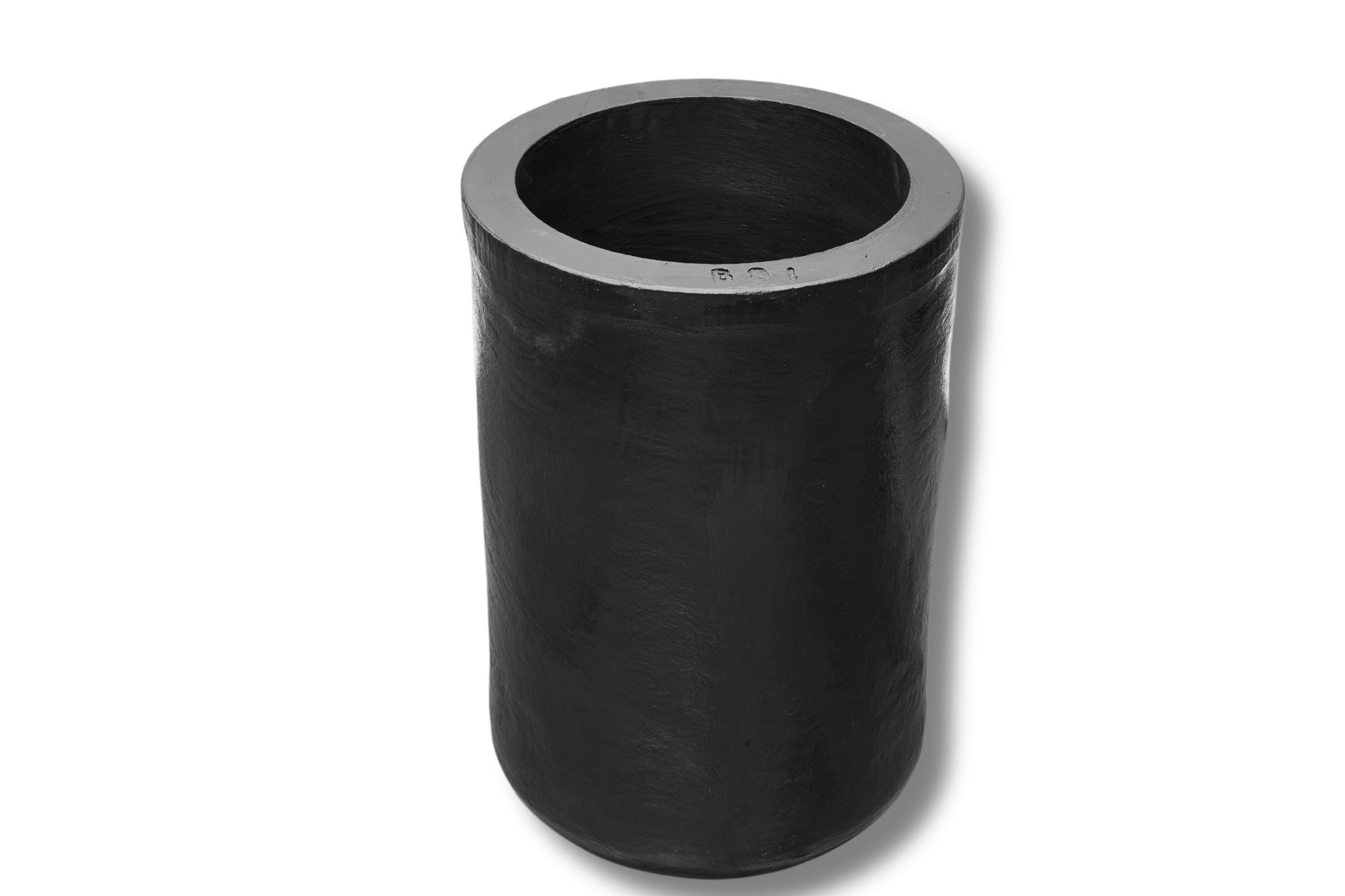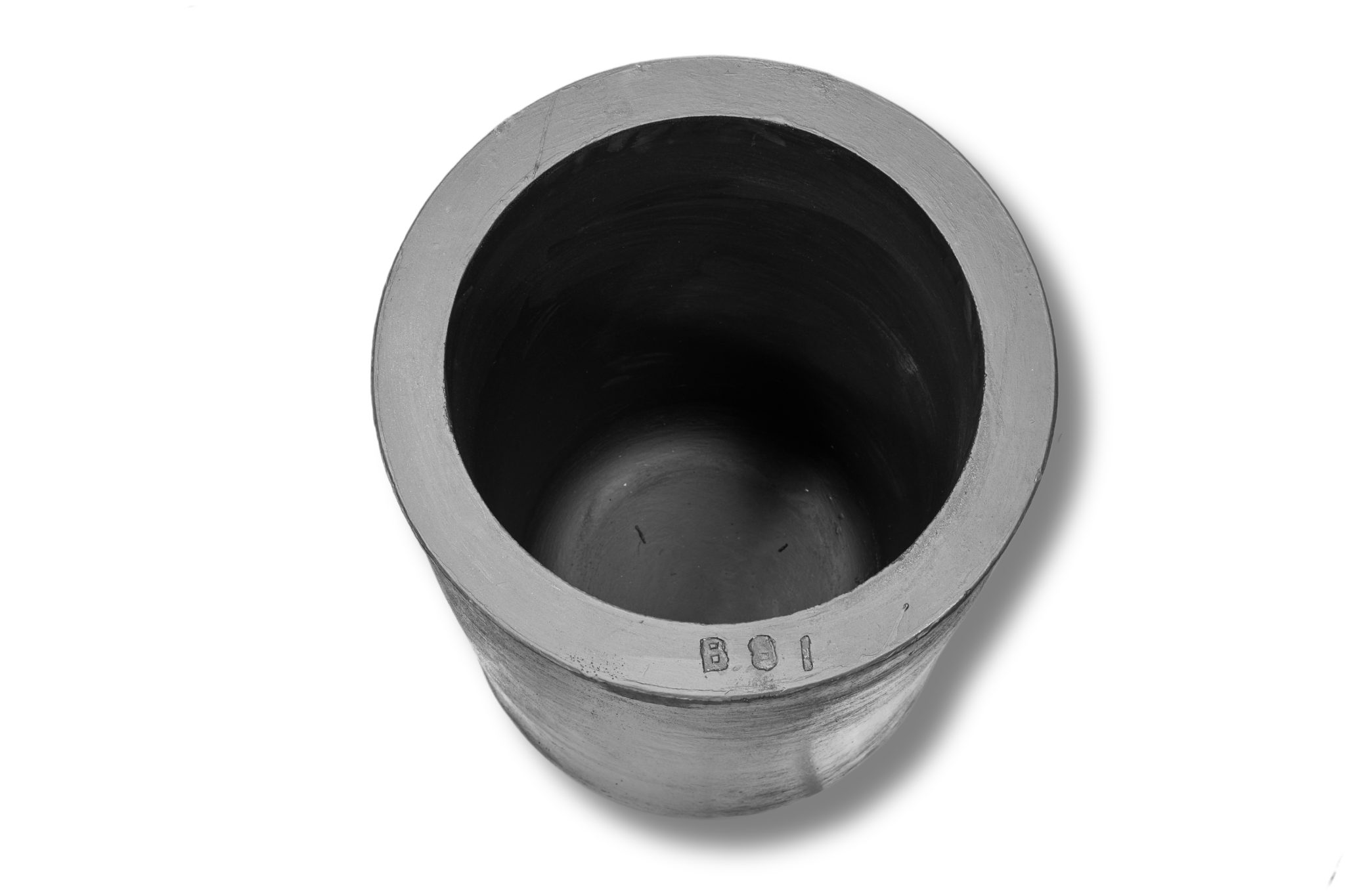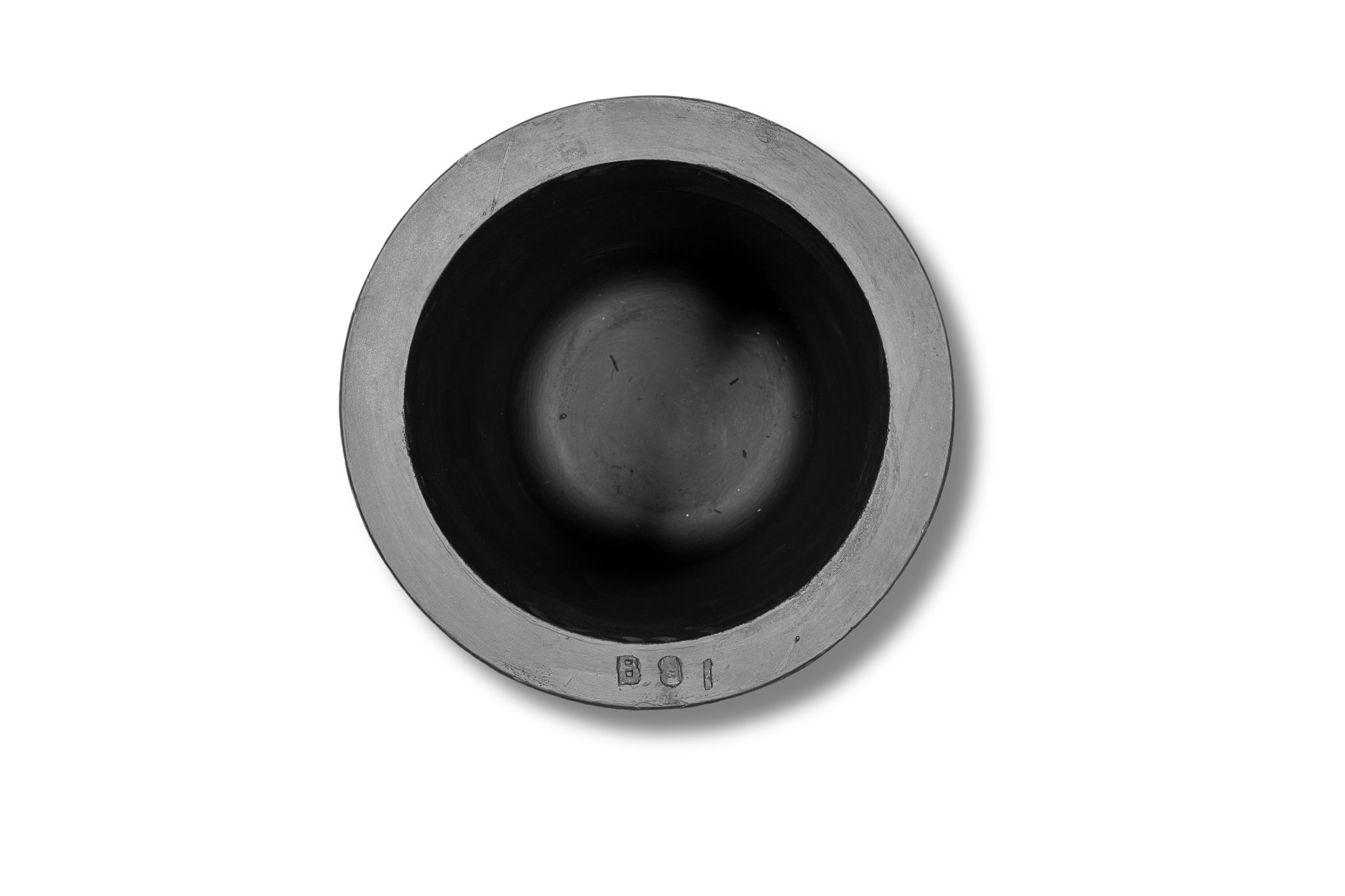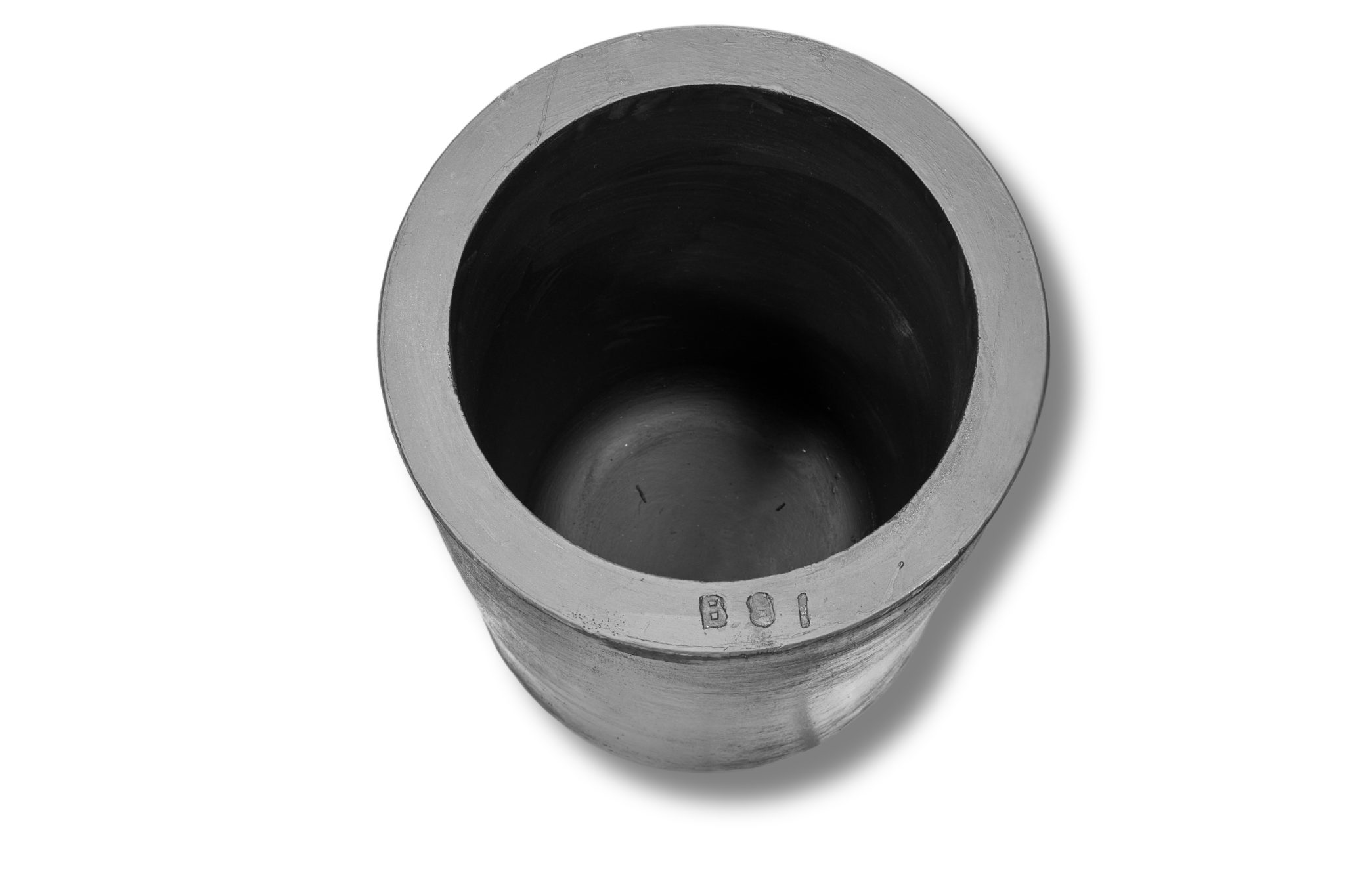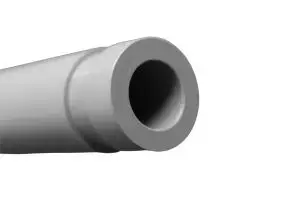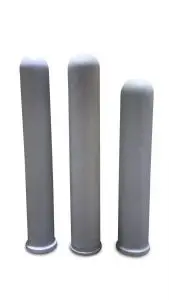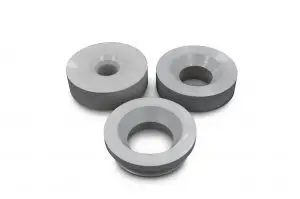Description
Our crucibles decrease energy waste with lower eddy current losses in metallic or lower-resistance ceramic materials.
The thermal conductivity enables faster melting cycles for efficiency in industrial settings when batch consistency and uptime matter. Moreover, the mechanical integrity of the crucible averts structural deformation from high induction currents for long-term stability.
We customize our crucibles for induction frequencies, coil geometries, and smelting loads. The internal microstructure of the material lowers thermal expansion mismatches, which can trigger early failure under repeated heating and cooling cycles. Unlike conventional refractory materials, our crucibles have a multi-phase composite matrix to resist rapid oxidation at high temperatures. That assures durability in argon-shielded and open-atmosphere melting conditions.
We also adjust the grain orientation of the silicon carbide-graphite structure for electrical conductivity and to avoid localized overheating. So, our crucibles provide a constant thermal response for lower energy consumption per melting cycle and metal purity throughout the process.
Energy-Efficient Material Composition
We use a hybrid formulation of silicon carbide, graphite, and high-purity refractory oxides for low resistive heating losses and high mechanical strength. Our crucibles have a bulk density above 2.22 g/cm³, which boosts heat retention and inhibits excessive mass heating. The modulus of rupture exceeds 7.2 MPa for resistance to mechanical and thermal stress. The thermal conductivity of 45 W/mK confirms that heat moves evenly across the crucible to avoid localized hotspots that could cause early degradation. Additionally, the low porosity (<14%) lowers metal contamination risks to preserve precious metal alloys during high-temperature operations.
Tailored for Different Metal Types and Induction Frequencies
Induction furnaces operate from 50 Hz to several kHz, depending on the metal being processed. Our crucibles diminish dielectric losses in low-frequency applications and thwart excessive electrical conductivity that could prompt coil short-circuiting at higher frequencies. For low-temperature aluminum alloy smelting (620-920°C), we optimize the material to resist aluminum's corrosive reaction with refractory surfaces for decreased contamination. For high-temperature copper, gold, and silver melting (900-1400°C), we reinforce the crucible structure with reaction-bonded silicon carbide to resist thermal shock and flux-induced erosion.
Melting Temperature Range: 620 - 1400°C
We engineer our crucibles to tackle a broad range for compatibility across metals and refining techniques. The minimum working temperature of 620°C helps melt aluminum and zinc alloys without heat losses. The upper threshold of 1400°C supports the smelting of copper-based alloys, gold, silver, and rare metals needing higher thermal stability. To bear this range, our crucibles have a coefficient of thermal expansion of approximately 4.5 × 10⁻⁶ K⁻¹, which averts structural fractures during rapid heating and cooling cycles. That lets operators switch between different metal loads without recurrent crucible replacements for lower idle time and working costs.
XICRU™ Isostatic pressed SiC/Carbon crucible |
|||||
| Property | Value/Range | Percentage | Notes | ||
| Carbon Content (C) | 39-42 | % | Percentage of carbon in the crucible material | ||
| Silicon Carbide Content (SiC) | 26-30 | % | Percentage of silicon carbide in the material | ||
| Silicon Dioxide Content (SiO2) | 19-25 | % | Percentage of silicon dioxide in the material | ||
| Aluminum Oxide Content (Al203) | 7-10 | % | Percentage of aluminum oxide in the material | ||
| Refractoriness | <1400 | ℃ | Maximum temperature the crucible can withstand | ||
| Apparent Porosity | <14.0 | % | Porosity, indicating permeability | ||
| Modulus of Rupture | >7.2 | MPa | Measures the strength before breaking | ||
| Bulk Density | >2.22 | g/cm³ | Density of the crucible material | ||
Before first use, remove moisture from the crucible structure to avoid thermal shock.
Heat the empty crucible to 200°C over two hours to let moisture evaporate. Then, increase the temperature to 600°C over four hours with a controlled heating rate of 100°C per hour. That gives even heat distribution throughout the crucible walls and stops internal stress fractures.
Once the crucible reaches 600°C, add preheated and dry raw materials to lower sudden thermal fluctuations. From this stage, increase the temperature to the final melting point per the target metal (aluminum at 700°C, copper at 1100°C, or silver/gold above 1200°C).
Remove residual slag after each melting cycle and rotate the crucible by 90 degrees monthly for even wear.

